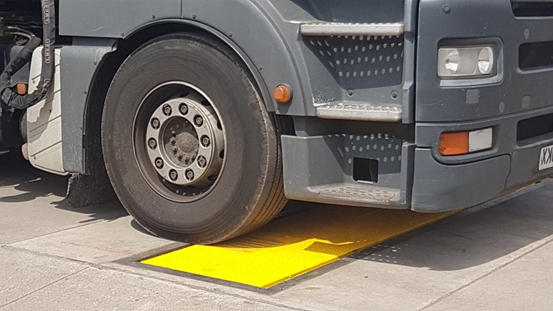Weighbridges play a crucial role in ensuring the fairness and accuracy of weight distribution for trucks and trailers, especially in industries where transportation of goods is key.
They are large, robust platforms designed to weigh vehicles, including trucks and trailers, while they remain stationary or in motion. Ensuring proper weight distribution is crucial for safety, adherence to road regulations, and operational efficiency.
Understanding Weighbridges
A weighbridge is an industrial weighing machine used to weigh large vehicles. These scales are commonly found in places like freight yards, ports, and construction sites. They consist of a long platform equipped with sensors (load cells) that measure the vehicle’s weight. The system is designed to handle the weight of heavy-duty trucks, including their cargo, while ensuring that each axle’s load is within legal limits.
The Role of Weighbridges in Weight Distribution
When a truck or trailer drives onto a weighbridge, the vehicle’s total weight is distributed across multiple axles. A truck typically has several axles, and each one supports a portion of the vehicle’s total weight. Weighbridges are equipped to measure the weight of each axle independently, ensuring that the load is evenly distributed. This is especially important because improperly distributed weight can cause several issues, including poor vehicle handling, tire wear, road damage, and even accidents.
Weighbridges use load cells placed under the platform to detect the weight applied by the vehicle. As the vehicle moves over the scale, sensors register the weight on each axle. The sensors are calibrated to deliver precise readings, which are shown on a linked computer system or terminal. By comparing the weight on each axle, operators can determine if the vehicle is loaded according to legal weight limits or if it requires adjustment to meet regulations.
Legal Compliance and Fair Weight Distribution
One of the primary functions of weighbridges is to ensure that trucks and trailers adhere to legal weight limits set by transportation authorities. These limits are implemented to safeguard infrastructure, minimize road wear, and ensure safety. Overloaded vehicles can cause substantial damage to roads, particularly at weaker points like bridges, leading to costly repairs. In severe cases, improper weight distribution can destabilize trucks, heightening the risk of accidents.
Weighbridges help enforce weight regulations by ensuring that trucks are weighed before entering highways or key transportation routes. By verifying each vehicle’s weight, including individual axle loads, weighbridges help identify overloaded vehicles that may need to be redistributed or offloaded. This helps to prevent excessive strain on both the vehicle and road infrastructure.
Load Distribution and Vehicle Safety
The accurate measurement of axle weight by a weighbridge ensures that the truck or trailer is properly balanced. Uneven weight distribution can result in several safety hazards, such as reduced braking efficiency, tire blowouts, and difficulty controlling the vehicle, particularly when navigating curves or making sharp turns.
Weighbridges help to identify whether the weight is adequately distributed across the axles, allowing operators to make adjustments if necessary. Properly balanced weight ensures that the vehicle’s suspension system works efficiently, extending the life of the tires and preventing undue stress on the truck’s structure.
Conclusion
Weighbridges are essential for maintaining fairness and safety in the transportation of goods. By ensuring proper weight distribution for trucks and trailers, they help maintain compliance with legal weight limits, improve road safety, and prevent infrastructure damage.

